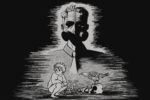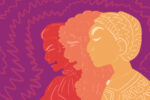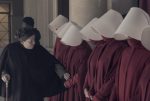While the death of Roe v. Wade is new, the threat to reproductive health care is not. Dystopian stories like Octavia Butler’s “Parable of the Sower” and Hulu’s adaptation of Margaret Atwood’s “The Handmaid’s Tale” have for decades demonstrated patriarchal societies’ impulse to uproot female power. Leni Zumas’ latest novel, “Red Clocks,” is another such example.
Just seven months before its 50th birthday, Roe v. Wade was killed by the Supreme Court. The case previously protected reproductive rights for United States residents at the federal level, but now those decisions will be left up to the individual states. Since the case’s official overturn on June 24, seven states have already enacted abortion bans, and nine more are expected to follow suit. That leaves 16 million people stripped of their reproductive rights.
Since this overturn was leaked back in May, I’ve spent a lot of time thinking about what it means to live in a “post-Roe” world. As someone who has always known the protection of this ruling, the sudden loss of a right I’d been told since birth was constitutional is devastating. From conversations with family members to the way I consume media, everything about my life seems to have flipped on its head overnight. I’m kept awake by news reports of at-home abortion deaths and black-and-white protest pictures and Instagram Story activism. I’m kept awake by the idea of a post-Roe world.
What Is a Woman?
Zumas’ novel opens with the tagline, “Five women, one question: What is a woman for?” For the rest of the novel, Zumas attempts to answer that question.
Set in a small coastal town in Oregon, Zumas builds a world strikingly similar to our own: Strangers still gawk in grocery stores, teenage boys are still mean to their girlfriends, and children are still bored in history class. The only difference is that, in “Red Clocks,” abortion is now illegal.
After a new president takes office and champions the Personhood Amendment, a ruling that grants all the rights of personhood to a fertilized egg at the moment of conception, several long-standing reproductive rights blink out of existence. Laws now criminalize treatments like IVF and classify all abortions as murder; residual acts further restrict adoption to the most specific, near-impossible circumstances. The amendment is designed to “protect life,” but in actuality, it is a declaration of war against women.
“Red Clocks” follows the stories of four of these women in the wake of the Personhood Amendment. Told in their own sections from their own points of view, the women struggle with the questions and circumstances of motherhood, identity and freedom in their own post-Roe world. With heartbreaking prose distinct to each character, every chapter asks the reader again, “What is a woman?”
A Woman Is a Host
The first woman — though she is only a child — is Mattie, whose chapters are titled “The Daughter.” Mattie is the classic abortion tale: After having unprotected sex with a boy, the high schooler must decide between becoming a mother and giving up on her future. For Mattie, the choice is easy. She is smart — smart enough to get out of her rural hometown and become a marine biologist. She does not want to be a mother. But the Personhood Amendment takes away that choice.
Like many of the emerging laws in our own post-Roe world, the Personhood Amendment of “Red Clocks” declares life at conception and thus equates an embryo to a human being. Mattie might be carrying that embryo, but it is still guaranteed its own independent rights. So, while these foreign cells grow, Mattie has no choice but to care for them. In the simplest terms, Mattie is a host.
“Red Clocks” does not shy away from parasitism as a metaphor. The embryo sucks life from Mattie, taking her bone marrow and other nutrients to build itself a body. Mattie’s body must work twice as hard, pump twice as much blood and eat twice as much food, to feed the “clump of cells” in her belly. Pregnancy is dangerous, and, for this 15-year-old, unwanted, but Mattie has no choice but to go on. For the next nine months, she must put the embryo’s needs above her own — the law requires nothing less.
A Woman Is (or Is Not) a Mother
Much older than Mattie and much less pregnant, the next two women face very different struggles surrounding motherhood.
Ro, who the novel calls “The Biographer,” is a single woman in her 40s who wants to have a child, but the Personhood Amendment outlaws in-vitro fertilization, so intrauterine implantation is the only legal option left. Ro says these treatments are no better than a turkey baster.
Susan, titled “The Wife,” is already a mother. Her marriage is unhappy, but the world tells her a broken marriage is a broken family, so she stays for the sake of her children. Though she has everything society says should make her happy, Susan is still miserable.
Ro has everything Susan wants, and Susan has everything Ro wants. Ro hates Susan because she gets to be a mother, and Susan hates Ro because she doesn’t have to be. Both women resent their own lives and envy what the other has.
The society of “Red Clocks” equates womanhood to motherhood. To truly be a woman means to also be a mother. Both Ro and Susan have bought into this lie, though they meet its standards in different ways: Ro longs for a child, but her want stems from a wish to better fit into society as a mother rather than a spinster. Yet Susan, who already checks off the boxes of both mother and wife, is equally as outcasted as Ro because of her failing marriage. Their value and place in society come from their relationship to motherhood. Under the Personhood Amendment, being a just woman isn’t enough.
A Woman Is a Threat
The final woman, Gin, who the novel calls “The Mender,” is neither a mother nor not: She gave up a child for adoption before the Personhood Amendment stripped people of that choice. Whether it be from regret or solidarity, Gin now spends her time providing women with the health care their government won’t. She gives girls of all ages herbal tonics that can induce a natural abortion, and she is wanted by the state because of it.
Gin is a threat to society because she is a woman who knows her own power. Even when accused of a crime she did not commit, Gin does not falter under the stares of powerful men. She holds her back straight and speaks the truth, and she will not allow anyone to speak over her. For this, the woman is often called a witch or a fanatic, but she does not care. Motivated by her own past and the futures of women just like her, Gin will accept their insults with a smile. She is okay not being a woman; she would much rather be a threat.
A Woman Is a Story
A year after “Red Clocks” was published, Zumas sat down with interviewer Susan DeFreitas at The Millions to discuss the national bestseller. When asked about the real-world implications of her novel, Zumas said:
“What I see as one of the superpowers of fiction is that it can really put the reader inside the experience of a law’s consequences and aftermath, intentional and unintentional, as you say. So rather than, say, having an abstract conversation about reproductive rights…it’s more about, say, what it feels like to be a 15-year-old girl who has plans to become a marine biologist and go to math camp who’s told, ‘There’s a beginning of a pregnancy in your body and you cannot stop it.’”
Though a work of fiction, Zumas’ 2018 novel feels a little too real in 2022. While the overturn of Roe v. Wade is not yet as drastic as the Personhood Amendment, both pose the same threat to the freedom of choice. “Red Clocks” is a dystopian novel, but it tells a very real story: people stripped of their rights. The women of “Red Clocks” represent millions of Americans now living in their own post-Roe world, but unlike the novel, their stories aren’t fiction.

















